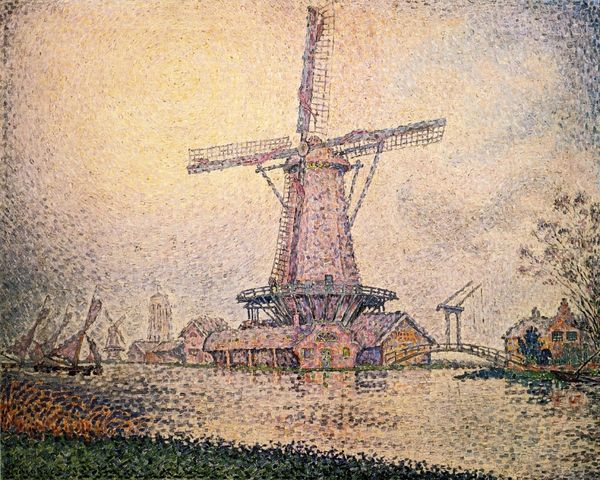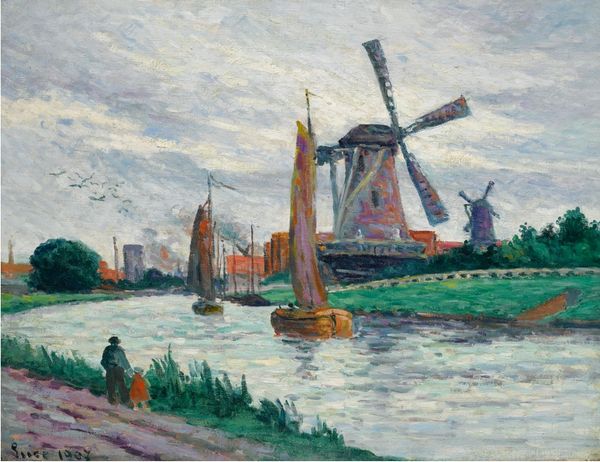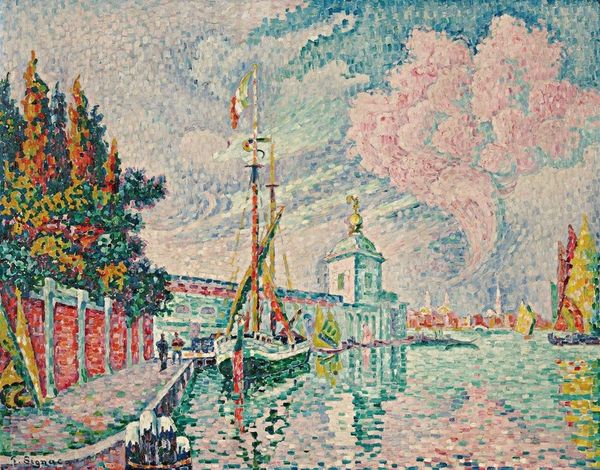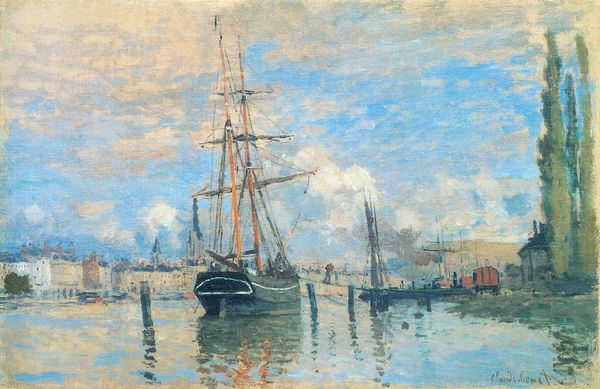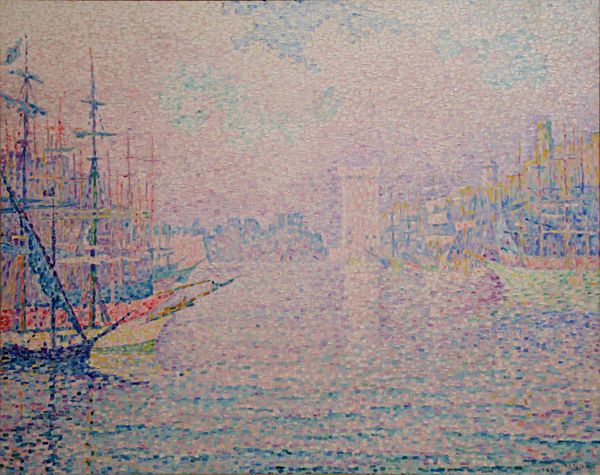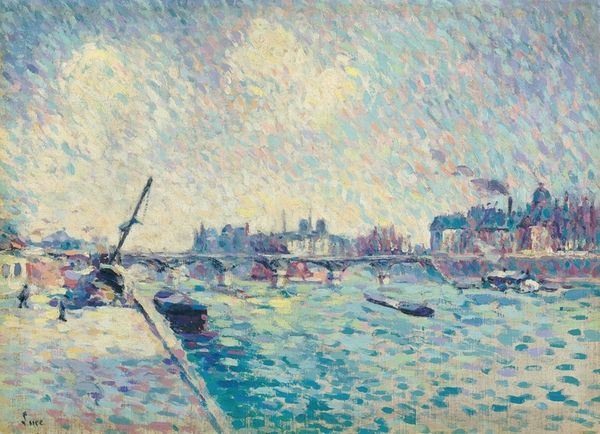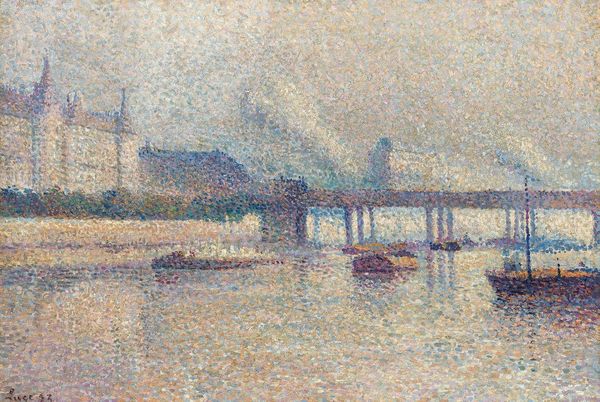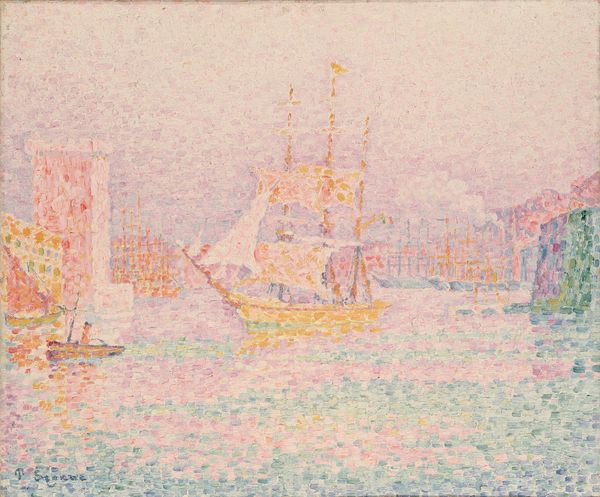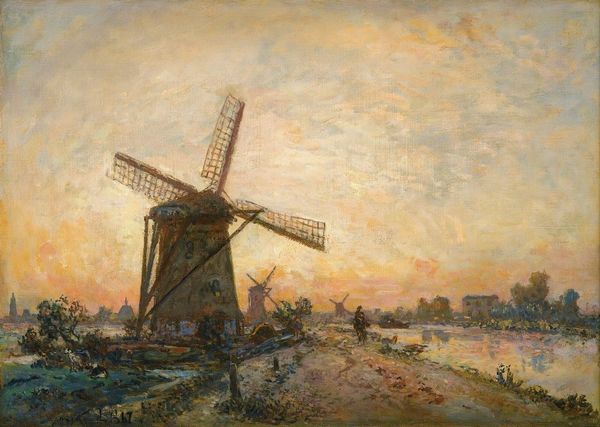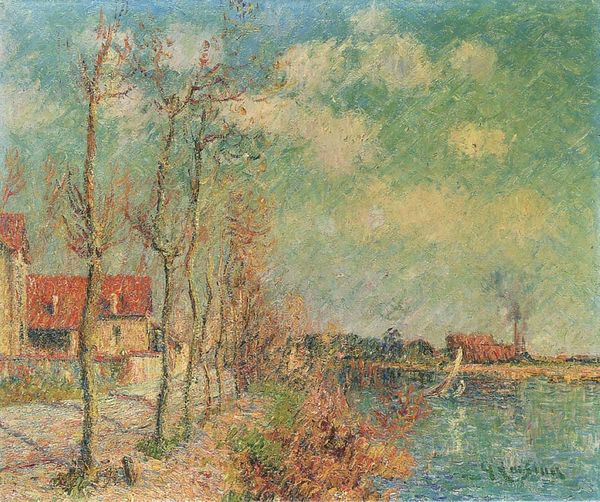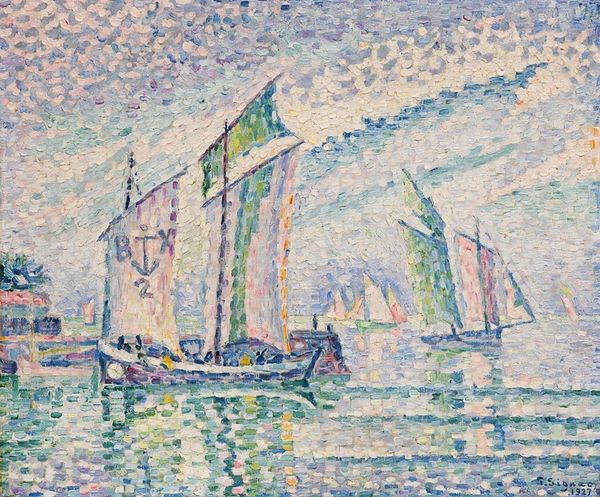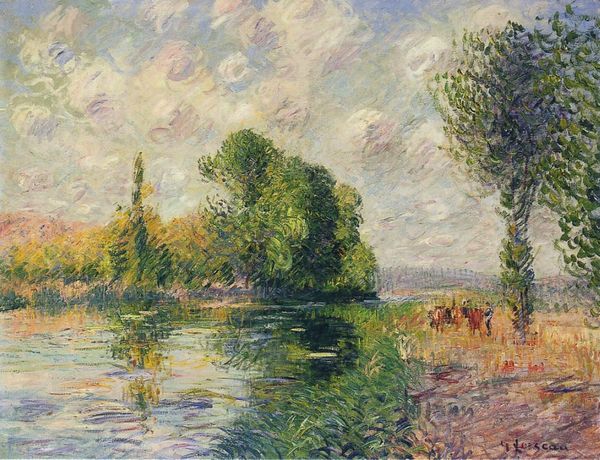
#
abstract expressionism
#
abstract painting
#
impressionist painting style
#
landscape
#
impressionist landscape
#
possibly oil pastel
#
fluid art
#
acrylic on canvas
#
paint stroke
#
watercolor
#
expressionist
Copyright: Public Domain: Artvee
Paul Signac painted "Canal of Overschie" with oil on canvas using the pointillist technique. Signac was a key figure in the neo-impressionist movement, which sought to bring scientific rigor to the intuitive practices of impressionism. In the late 19th century, this aesthetic project was bound up with utopian social ideas. Pointillism, with its basis in optical mixture, was seen as analogous to a society in which individuals maintained their distinct identities while contributing to a harmonious whole. This idea was particularly relevant in France, a country undergoing rapid industrialization and social change. Signac was inspired by the writings of anarchist thinkers like Élisée Reclus. He believed that art could play a role in creating a more just and equitable world. His paintings often depicted scenes of leisure and labor in harmony, reflecting his vision of a utopian future. To fully understand Signac's work, we have to investigate the manifestos and critical debates of the era. His art can be seen as a visual expression of the social and political ideals of his time.
Comments
No comments
Be the first to comment and join the conversation on the ultimate creative platform.
